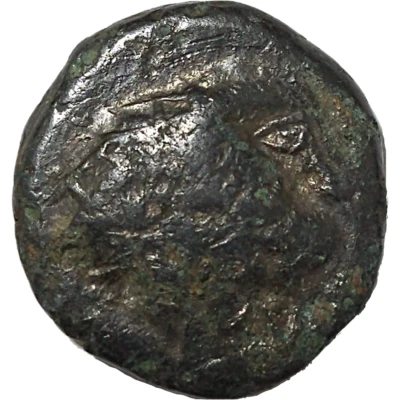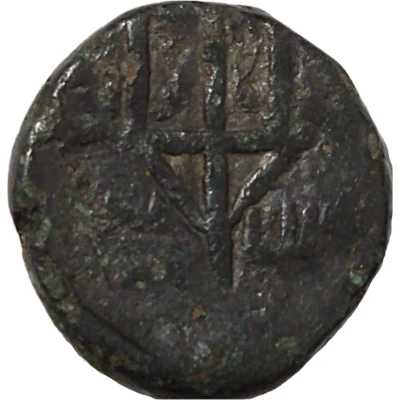


Obverse © @Adilson
Bronze AE 187 BC
187 BC year| Bronze | 7.5 g | 19 mm |
| Issuer | Serdi (Central and Eastern European Celts) |
|---|---|
| Type | Standard circulation coin |
| Year | 187 BC |
| Currency | Drachm |
| Composition | Bronze |
| Weight | 7.5 g |
| Diameter | 19 mm |
| Shape | Round (irregular) |
| Technique | Hammered |
| Demonetized | Yes |
| Updated | 2024-10-09 |
| Numista | N#367710 |
|---|---|
| Rarity index | 95% |
Reverse
Trident type H, is in group 4 without inscription, but with one to three symbols or letters.
Comment
Serdi CeltsThe Serdi were a Celtic tribe inhabiting Thrace, around modern Sofia, Bulgaria, the Roman Serdica. They probably established themselves in this area during the Celtic migrations at the end of the 4th century B.C. There is, however, no literary evidence for their existence before the 1st century B.C. The coins discussed in the article below might have been struck by them. The Serdi were gradually Thracianized over the centuries but retained their Celtic character to a late date in the Roman period
The obverse encountered is predominantly from a very worn die depicting the River Strymon, or a very crude rendering of the River Strymon also from overused obverse dies. The portrait most often encountered is a simplified linear barbaric rendering.
Comment added by Joseph Sermarini: Due to coin wear or worn dies, it can be difficult to determine the head type. In addition, the heads shown are the most typical types. Some heads may combine features of more than one type.]
The reverse shown is the trident, and is usually much clearer than the obverse. The die cutting of this reverse is simple and easy to copy, making it a good choice for imitative coinage.
The reverse legend is divided into six groups, as follows:
Group 1. Better quality rendering with inscription similar to ΜΑΚΕ∆ΟΝΩΝ.
Group 2. Inscription ΜΑΚΕ∆ΟΝΩΝ retrograde.
Group 3. Inscription but illiterate.
Group 4. No inscription, but one to three symbols or letters.
Group 5. No inscriptions or symbols.
Group 6. No inscription, with random pellets.
Eight different trident types are illustrated below.
Example of the same type of head, but with a different trident.
Interesting fact
One interesting fact about the Bronze AE coin from Serdi (Central and Eastern European Celts) is that it features a unique blend of Celtic and Greek influences in its design. The obverse side of the coin depicts a stylized horse, which was a symbol of strength and power in Celtic culture, while the reverse side features a rendition of the Greek goddess Athena, highlighting the cultural exchange and fusion that occurred between the Celts and the Greeks during this time period.